Explorations in Circular Motion
Rosa Ana Orlando
The Evolution of Mariana Copello’s Artistic Process
When first encountering a piece by Houston-based visual artist Mariana Copello, one of the first things you notice is its impeccable execution. From the application of color to the precision of every edge and finish, it is clear that every single detail has been carefully thought of.
Nonetheless, if you take the time to get to know the piece, as well as other works by Copello, you start finding captivating clues to the artist’s mind and creative process.
I have been in close contact with Copello’s artistic investigation since the day we met, more than eight years ago. Back then, Copello had just exhibited what would become one of her signature pieces at an annual juried exhibition at the Glassell School of Art, where she was still a student. The piece, a striking yellow Allegro [Image 1] was, to me, the beginning of an outstanding never-ending exploration that would take different forms and shapes, but that would always keep a connecting thread.
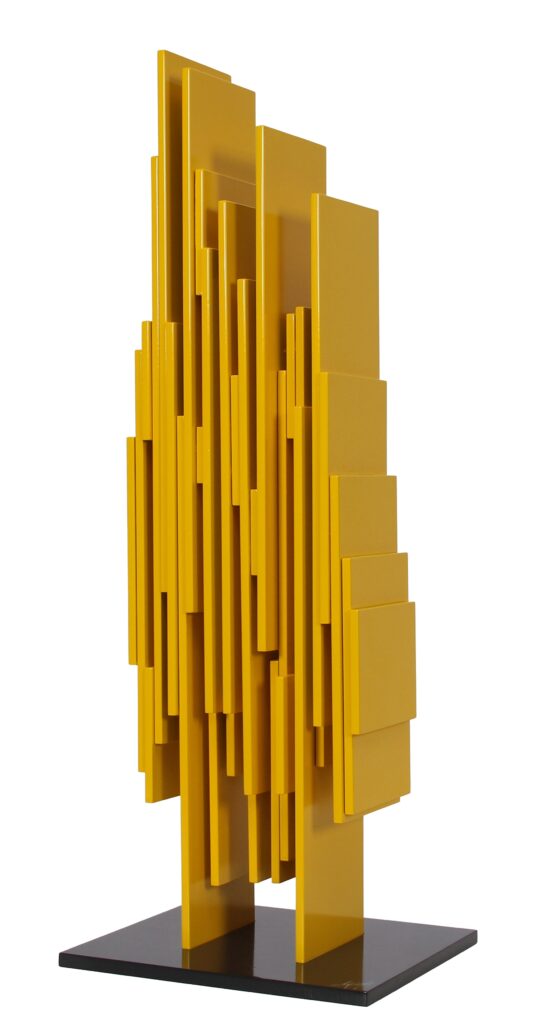 Image 1. Allegro, 2013, painted wood
Image 1. Allegro, 2013, painted wood
Since the very beginning, Copello’s art has shown a direct reference to music, not only through the title of many of her series, but also in the way her different bodies of work relate to each other.
This was certainly noticeable in one of her exhibitions, Sonidos Virtuales (Houston, 2016), where musicality played a remarkable role. From the title of the exhibition to the arrangement and name of many of the pieces, the whole exhibition was centered around musical terms and concepts [Image 2]. This exhibition, where I had the pleasure to organize a Curator & Artist Talk, already showed Copello’s fascination with line, color, and movement.
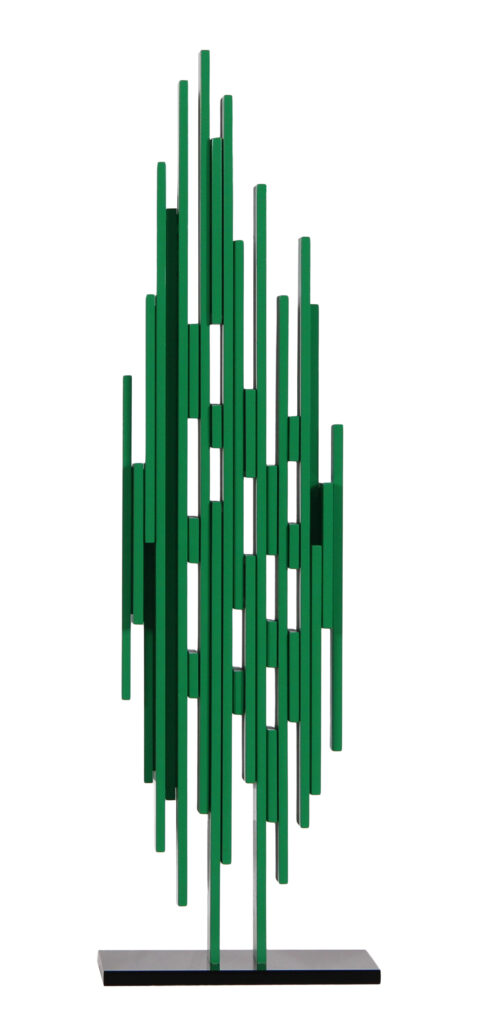 Image 2. Impromptu, 2015, painted plexiglass
Image 2. Impromptu, 2015, painted plexiglass
After producing a number of sculptures originally inspired by the Allegro, Copello started experimenting with the introduction of materials such as raw aluminum and plexiglass, as well as with the use of different colors. The artist also moved to a more vertical aesthetic which resulted in a series of sculptures called Ritmo Lineal [Image 3], where the relationship between the different materials and the effect of transparencies played a crucial role. These sculptures, which in my opinion are a refined evolution of the Allegros, provided an additional layer to the artist’s study of casted shadows, as colors join shadows in their projection on the wall.
 Image 3. Ritmo Lineal – Red, 2018, aluminum and plexiglass
Image 3. Ritmo Lineal – Red, 2018, aluminum and plexiglass
Along with this investigation, Copello worked and re-worked the volumes of her Geometría Caribe [Image 4] and arrived to Frecuencia Geométrica, a work that was selected for the MFAH Latin American Experience auction in 2019 [Image 5]. The shadows casted on the wall are an integral part of both sculptures, as well as a key element of Copello’s artistic quest. So much so, that the shadow casted by Geometría Caribe was the inspiration for yet another sculpture, Frecuencia Geométrica Bidimensional [Image 6]. In this sculpture the artist cleverly incorporated the result of two additional explorations: the chromatic pause, and her study of the two-dimensional realm.
The chromatic pause responded to the artist’s question of what would happen to her work if she removed one of its main elements –color. This brave experimentation gave way to a number of delicate pieces that still carry Copello’s mark, but that, precisely because of their absence of color, allowed for a more in-depth study of the interaction of different materials, a greater play of negative spaces, and an enhanced effect of shadows [Image 7]. Another bold choice, in my opinion, was Copello’s decision to venture into printmaking, a completely new process for her. During this time, the artist produced a different number of series where she studied how the same elements that had been key in her sculptures responded to the two-dimensional space. Line, color (and the absence of), and movement came again as main characters of a metaphorical dance, which resulted in Variaciones Lineales, a series of compelling silkscreens [Image 8].
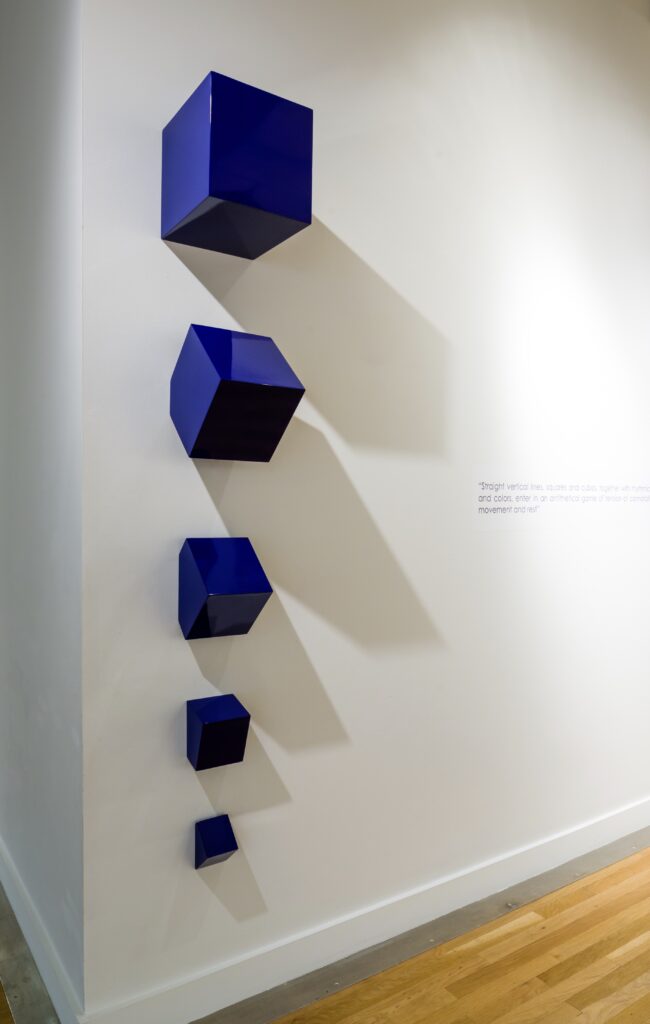 Image 4. Geometría Caribe, 2014, painted fiberglass
Image 4. Geometría Caribe, 2014, painted fiberglass
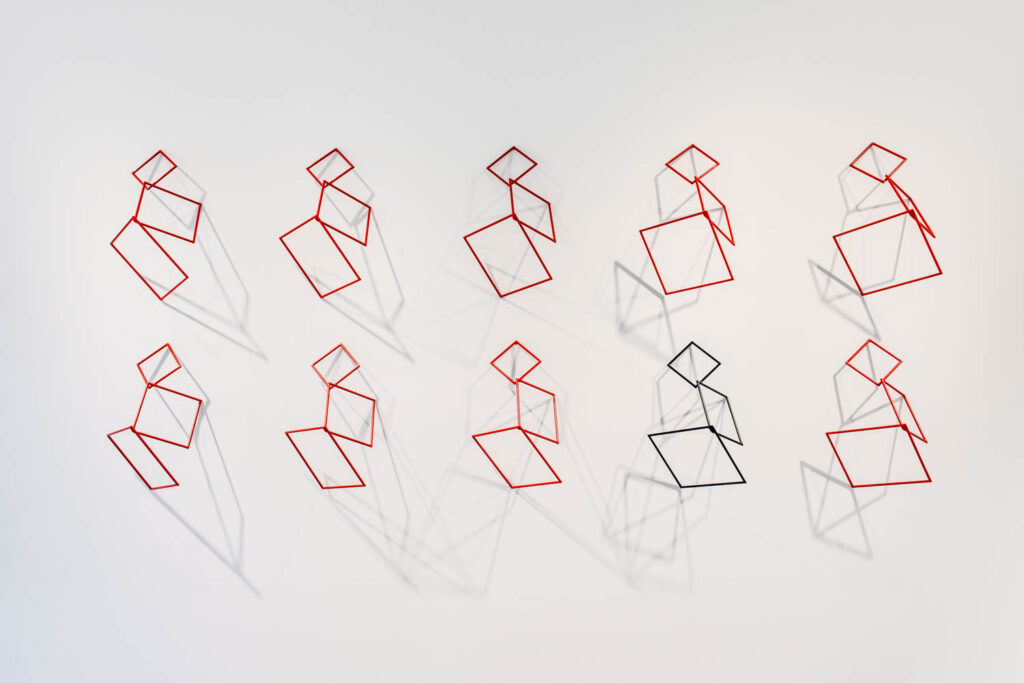 Image 5. Frecuencia Geométrica, 2016, painted stainless steel
Image 5. Frecuencia Geométrica, 2016, painted stainless steel
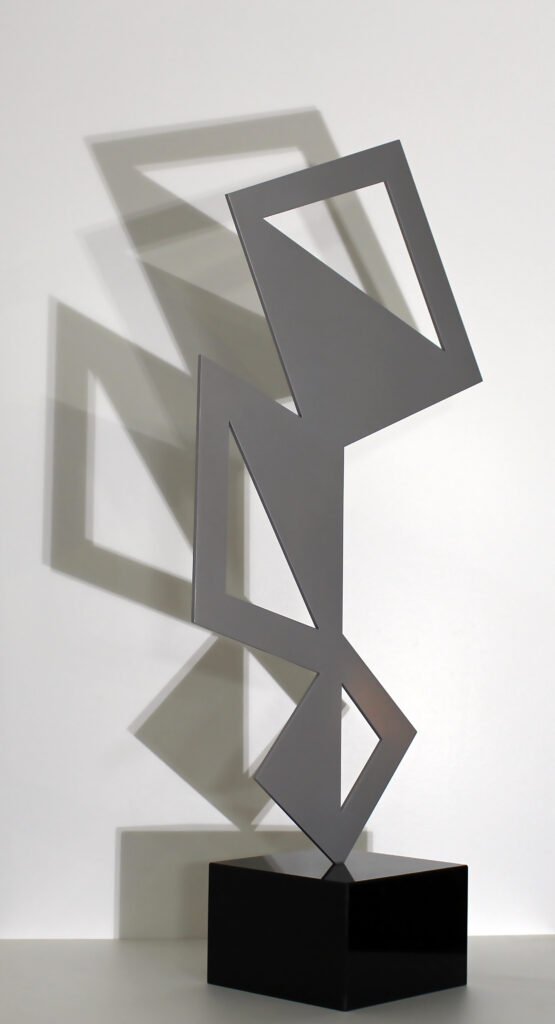 Image 6. Frecuencia Geométrica Bidimensional, 2019, painted aluminum and granite
Image 6. Frecuencia Geométrica Bidimensional, 2019, painted aluminum and granite
 Image 7. Chromoritmo, 2016, painted aluminum
Image 7. Chromoritmo, 2016, painted aluminum
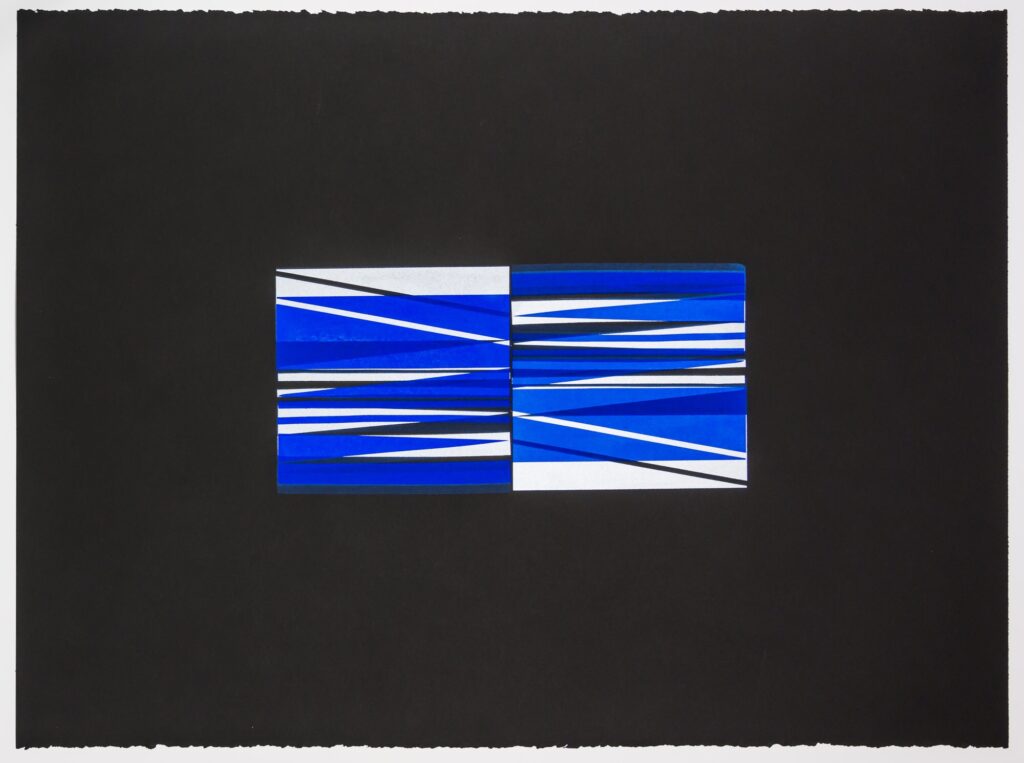 Image 8. Variaciones Lineales, 2019, silkscreen
Image 8. Variaciones Lineales, 2019, silkscreen
In the meantime, Copello had the opportunity of, one more time, step away from her comfort zone and face a new challenge when she was commissioned to do her first monumental sculpture for an urban development. By carefully studying the space and considering the available materials, the artist created Frecuencia Espacial [Image 9], a magnificent piece that coexists beautifully in the environment for which it was designed. A clear evolution from Frecuencia Geométrica, Frecuencia Espacial takes the lines and shapes of the former to a new level, not only because of its scale, but also due to the choice of a material that will transform with the pass of time, and with the multiple nuances that environmental changes produce on the sculpture.
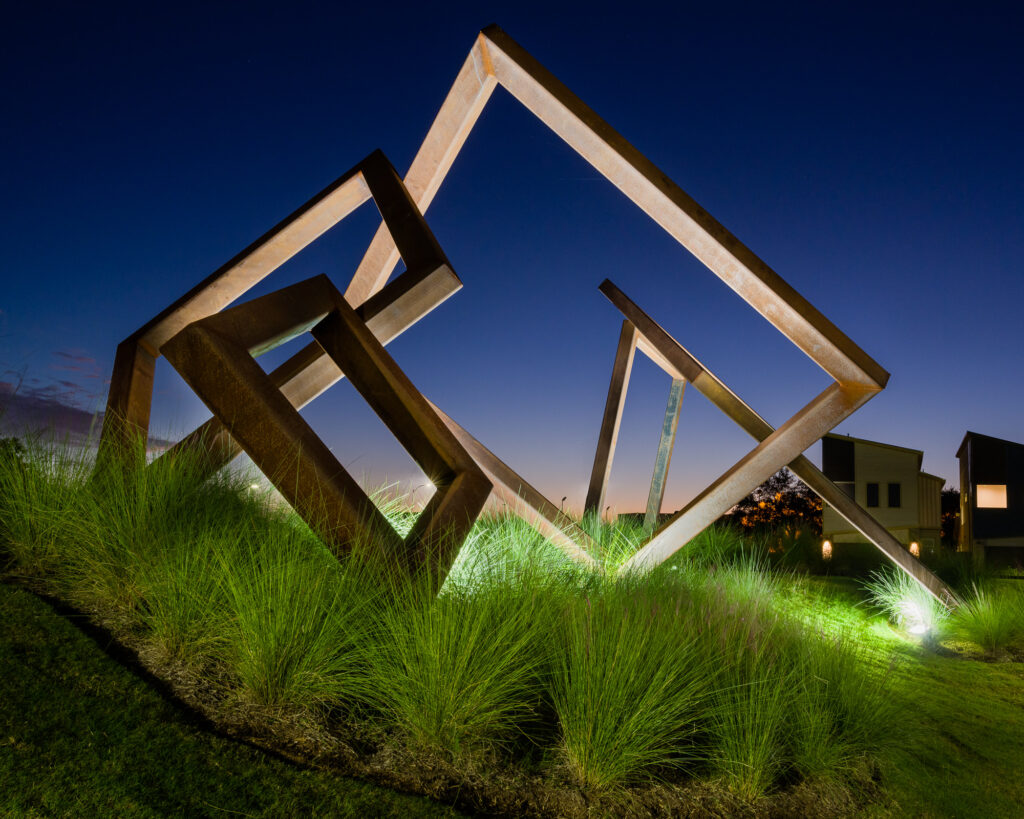 Image 9. Frecuencia Espacial, Houston, 2017, steel
Image 9. Frecuencia Espacial, Houston, 2017, steel
All these new and prior investigations prompted Choreographic Abstractionism in Mariana Copello, a solo exhibition (Houston, 2019) where musicality was again central to its conception. I had the honor to do the museography for this exhibition, and I particularly enjoyed how natural it was to find connections among the different pieces, and to bring the artist and curator’s ideas to the space. This exhibition, meant to be a retrospective of Copello’s work, counted with the special participation of Houston-based artist Violette Bule, who presented, in her own words, “a photographic essay that aimed to capture the tenacious vibration exerted by Houston’s natural light over the dynamic forms that configure this sculpture”, referring to Frecuencia Espacial, a way to metaphorically bring the monumental sculpture into the exhibition.
Copello’s latest piece, Movimiento Lineal [Image 10], a site-specific large-scale mobile, is to me, a noteworthy synthesis of all her past work, and in particular, a marvelous evolution of her silkscreens. In a way, it is as if the prints became tridimensional to take over the space with very subtle movements turning from a central axis into a slow dance that requires close attention from the viewer to be noticed. In spite of its monumental size, this piece feels so light and delicate that makes us lose the sense of scale. Here again, casted shadows become an integral part of the sculpture, and because they change as the piece moves and amid atmospheric changes, the mobile transforms into a new piece every time you look at it.
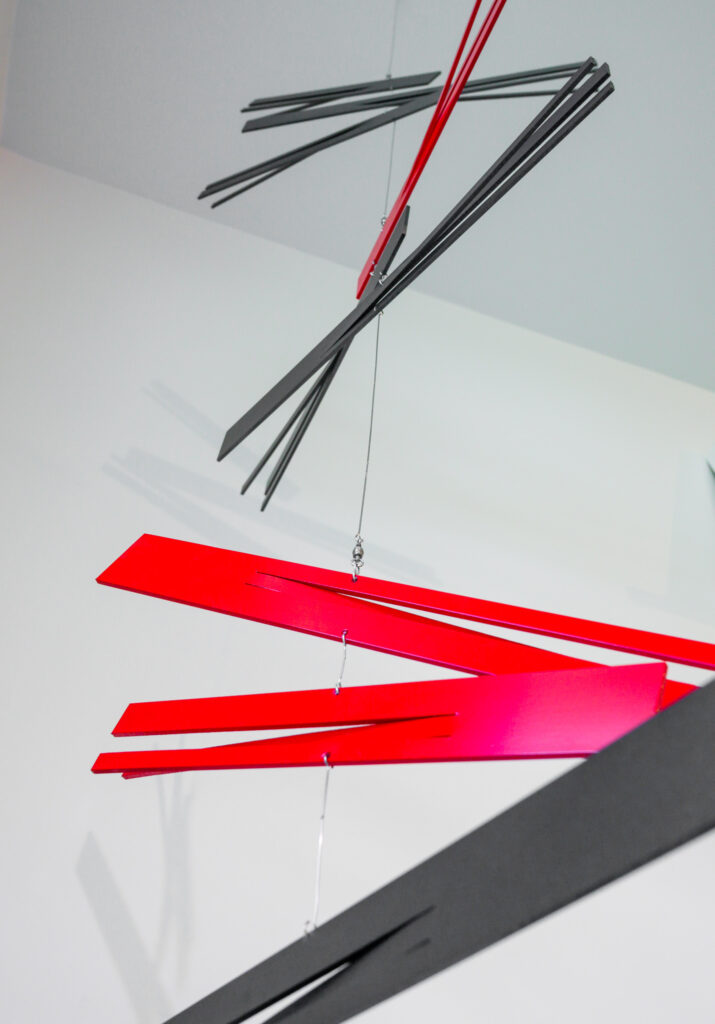 Image 10. Movimiento Lineal, 2020, painted aluminum
Image 10. Movimiento Lineal, 2020, painted aluminum
To conclude, I would like to say that Copello’s use of materials, her exploration of color, the importance of shadows, and her investigation of the line, as well as her use of space and her meticulous care of every detail, shows the process of an artist who has a clear line of investigation and is rigorous in her methods, but who welcomes challenges and is open to unpredictable results. Her work constantly sways between the two-dimensional and the three-dimensional realm, departs and returns to her signature shapes and colors, and in the process always finds ways to innovate while revisiting previous inspirations. I cannot wait to see what else this Venezuelan-born artist will bring to the Houston art scene.
 Rosa Ana Orlando is a museum specialist with extensive knowledge of art history. She has more than 15 years of experience in art collection management, as well as a strong background in exhibition planning and design. She has taught art appreciation at college level and has been a docent at a variety of museums including art, history, and children’s museums. As an independent art curator and consultant, Rosa Ana has led several curatorial projects and a variety of art education programs. Rosa Ana is an engineer with a Master of Liberal Arts, and a Master of Arts in Museum Studies from Johns Hopkins University.
Rosa Ana Orlando is a museum specialist with extensive knowledge of art history. She has more than 15 years of experience in art collection management, as well as a strong background in exhibition planning and design. She has taught art appreciation at college level and has been a docent at a variety of museums including art, history, and children’s museums. As an independent art curator and consultant, Rosa Ana has led several curatorial projects and a variety of art education programs. Rosa Ana is an engineer with a Master of Liberal Arts, and a Master of Arts in Museum Studies from Johns Hopkins University.
©Literal Publishing
Posted: February 25, 2021 at 8:01 pm











Excelente artículo sobre una maravillosa escultora